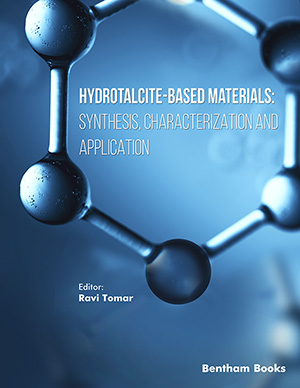
Abstract
Garcinia livingstonei T. Anderson (African mangosteen) is a member of family Clusiaceae and is native to South Africa. It is distributed from Malaysia to the Philippines, Burma and India. The plant is used traditionally in the treatment of diarrhea. It contains various chemical constituents belonging to biflavonoids, benzophenones and xanthones. Garcinia livingstonei is reported to possess beneficial pharmacological activities as anti-oxidant, anti-bacterial, anti-viral and cytotoxicity. This review aims at summarizing the available literature on the botanical features, phytochemical, ethnomedicinal and pharmacological activities of Garcinia livingstonei.
Keywords: Garcinia livingstonei, morphological features, traditional uses, nutritive value, phytoconstituents, pharmacological activity.
[http://dx.doi.org/10.1186/1475-2875-10-S1-S1] [PMID: 21411010]
[http://dx.doi.org/10.1002/hlca.19890720518]
[http://dx.doi.org/10.1016/j.jep.2013.07.023] [PMID: 23891889]
[http://dx.doi.org/10.1007/s10341-016-0311-9]
[http://dx.doi.org/10.3390/antibiotics10060681] [PMID: 34200286]
[http://dx.doi.org/10.1016/0378-8741(84)90086-2] [PMID: 6521492]
[http://dx.doi.org/10.1177/1934578X0900401010] [PMID: 19911572]
[http://dx.doi.org/10.1016/0378-8741(92)90004-B] [PMID: 1453703]
[PMID: 6216985]
[http://dx.doi.org/10.1021/np050406v] [PMID: 16562837]
[http://dx.doi.org/10.1021/jf9046094] [PMID: 20345100]
[http://dx.doi.org/10.1016/j.jfca.2011.10.006]
[http://dx.doi.org/10.5897/AJB10.660]
[http://dx.doi.org/10.1016/j.jep.2010.05.004] [PMID: 20452415]
[http://dx.doi.org/10.1089/jmf.2015.0099] [PMID: 26987025]
[http://dx.doi.org/10.1016/S0969-8043(97)00296-0] [PMID: 9570095]
[http://dx.doi.org/10.1079/9780851991283.0000]
[PMID: 23165533]
[http://dx.doi.org/10.4314/thrb.v12i2.56402]
[http://dx.doi.org/10.3109/13880209.2016.1158287] [PMID: 27137350]
[http://dx.doi.org/10.1590/S0100-40422007000400038]
[http://dx.doi.org/10.1590/S0100-40422012001100035]
[http://dx.doi.org/10.1016/j.jff.2016.10.001]
[http://dx.doi.org/10.3390/molecules22020325] [PMID: 28230759]
[http://dx.doi.org/10.1016/S0040-4020(01)98028-7]
[http://dx.doi.org/10.1016/j.phytol.2016.08.019]
[http://dx.doi.org/10.1590/0001-3765201520140564] [PMID: 25806988]
[http://dx.doi.org/10.1016/S0040-4020(01)89039-6]
[http://dx.doi.org/10.1016/B978-0-12-405927-6.00011-4]
[http://dx.doi.org/10.1016/0031-9422(91)83061-O]
[http://dx.doi.org/10.1016/0031-9422(92)83732-E]
[http://dx.doi.org/10.1007/s12272-020-01243-0] [PMID: 32594426]
[http://dx.doi.org/10.1016/j.phytochem.2012.08.020] [PMID: 23022020]
[http://dx.doi.org/10.1016/j.phytochem.2014.03.006] [PMID: 24690454]
[http://dx.doi.org/10.3109/13880209509065369]
[http://dx.doi.org/10.1002/ffj.3118]
[http://dx.doi.org/10.1016/j.jep.2011.08.023] [PMID: 21920421]
[http://dx.doi.org/10.1016/0891-5849(95)91457-3] [PMID: 7896166]
[http://dx.doi.org/10.5530/ax.2012.2.2.6]
[http://dx.doi.org/10.1016/j.phytol.2013.06.013]
[http://dx.doi.org/10.1016/j.foodchem.2011.10.110] [PMID: 29243605]
[http://dx.doi.org/10.1016/j.biopha.2018.04.068] [PMID: 29677543]
[http://dx.doi.org/10.1016/j.phytol.2017.04.007]
[http://dx.doi.org/10.1016/j.phytochem.2017.12.001] [PMID: 29247893]
[http://dx.doi.org/10.1038/jidsymp.2008.7] [PMID: 18369333]
[http://dx.doi.org/10.1158/1541-7786.MCR-06-0300] [PMID: 17314272]
[http://dx.doi.org/10.1016/j.fct.2011.06.051] [PMID: 21723363]
[http://dx.doi.org/10.1016/j.jep.2013.03.079] [PMID: 23603191]
[http://dx.doi.org/10.5530/pj.2020.12.12]
[http://dx.doi.org/10.1039/C0NP00055H] [PMID: 21120227]
[http://dx.doi.org/10.7314/APJCP.2014.15.15.6301] [PMID: 25124615]
[http://dx.doi.org/10.1007/s13659-014-0048-9] [PMID: 25466288]
[http://dx.doi.org/10.1002/cbdv.200490064] [PMID: 17191882]
 33
33 2
2



























